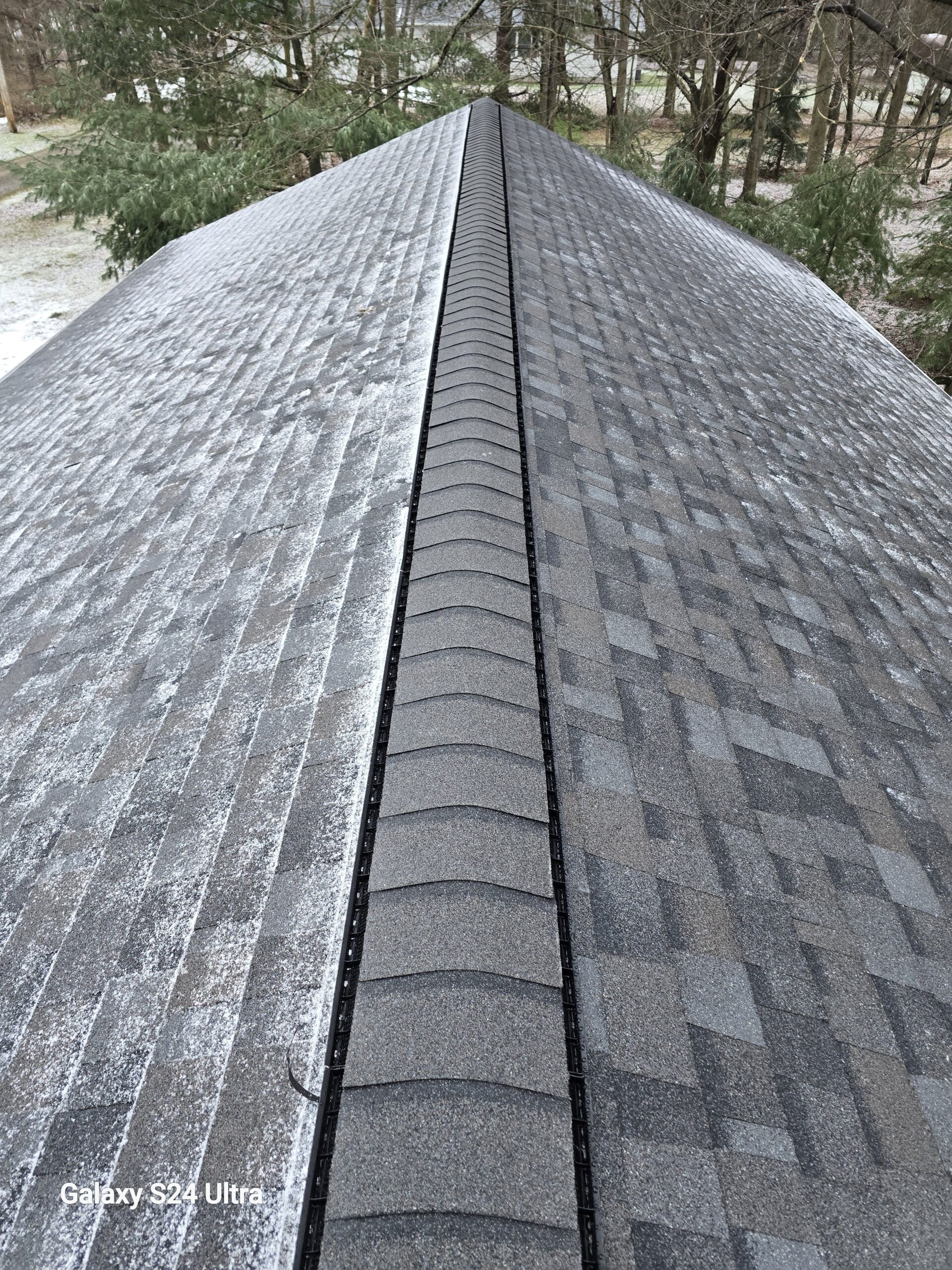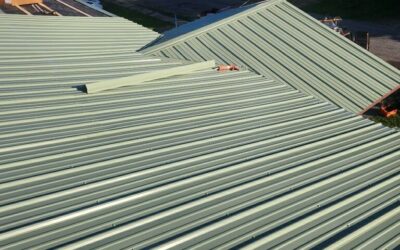Nail-Over Reroof vs. Roof Replacement: Which Is Right for You?
When it’s time to replace or repair your roof, you may be faced with a decision between nail-over reroofing and full roof replacement. While both options address issues with the roof, they have different benefits, drawbacks, and costs. Understanding the differences between these two roofing methods can help you make the right choice for your home, budget, and long-term needs.
In this comprehensive blog, we’ll dive deep into the pros and cons of nail-over reroofing versus full roof replacement. We’ll also cover factors to consider when making your decision, such as the age and condition of your current roof, budget considerations, and how each option can impact the lifespan and performance of your roof.
1. What Is Nail-Over Reroofing?
Nail-over reroofing—also referred to as overlay roofing or shingle overlay—is a roofing method in which new shingles are installed directly over an existing layer of shingles without removing the old shingles. This approach is often seen as a quick and cost-effective solution to roof replacement. However, it comes with certain limitations and risks that homeowners need to consider before opting for this method.
How Does Nail-Over Reroofing Work?
Nail-over reroofing involves the following steps:
- Inspection: The contractor will inspect the existing roof for any significant damage, such as leaks, rotten decking, or structural issues. The roof must be in decent condition before reroofing.
- Preparation: The existing roof is thoroughly cleaned to remove any debris, moss, or algae. Any damaged shingles that could compromise the installation of the new shingles will be addressed.
- Installation of New Shingles: The new shingles are then nailed over the old layer of shingles. The shingles are aligned to create a uniform and secure layer on top of the existing roof.
- Final Inspection: Once the shingles are installed, the contractor will perform a final inspection to ensure the roof is secure and properly sealed.
Benefits of Nail-Over Reroofing:
- Cost-Effective: Nail-over reroofing is typically cheaper than a full roof replacement because it eliminates the need to remove the old shingles, which saves on labor and disposal costs.
- Faster Installation: Since the old shingles aren’t being removed, the process is generally quicker. This is ideal for homeowners who need a roof replacement in a hurry.
- Minimal Disruption: With nail-over reroofing, the process tends to be less disruptive to your daily life. The construction noise and mess associated with tearing off old shingles are minimized.
- Less Waste: By not removing the old shingles, reroofing creates less waste, making it a more environmentally friendly option compared to a full roof replacement.
Drawbacks of Nail-Over Reroofing:
- Limited Lifespan: Adding a new layer of shingles over the old layer may reduce the lifespan of your roof. The new shingles may not last as long as they would if installed on a clean, solid surface.
- Structural Issues Remain: If your roof has underlying issues, such as damaged decking or poor ventilation, nail-over reroofing won’t address these problems. The old roof may continue to deteriorate, leading to potential future leaks or structural damage.
- Extra Weight: Adding a new layer of shingles over the old layer increases the weight of the roof. Depending on the structure of your home, this extra weight could strain the roof and potentially cause structural damage over time.
- Limited to One Layer: In many areas, local building codes limit the number of shingle layers that can be installed on a roof. This means that after one nail-over reroofing, you’ll be required to remove the old shingles for future repairs or replacements.
- Aesthetic Issues: The new shingles may not blend seamlessly with the old ones, which could lead to visible differences in the appearance of your roof.
2. What Is a Full Roof Replacement?
A full roof replacement involves removing the existing shingles, underlayment, and any other damaged components, such as decking or flashing, and replacing them with new materials. This process is more extensive than nail-over reroofing and is typically more expensive, but it ensures that the entire roof is in top condition and free of underlying issues.
How Does Full Roof Replacement Work?
Full roof replacement involves the following steps:
- Inspection: The roofing contractor will conduct a detailed inspection of your existing roof to assess the condition of the shingles, decking, insulation, and other structural components. This inspection will help determine the scope of the project.
- Removal of Old Roof: The existing shingles, underlayment, and possibly damaged decking are completely removed from the roof. This step allows the contractor to inspect and address any underlying issues.
- Repairs to Structural Components: Any damaged or compromised components, such as rotten decking or faulty ventilation systems, will be repaired or replaced. This ensures that the new roof has a solid foundation.
- Installation of New Roof: New underlayment, shingles, and flashing are installed according to industry standards. This is an opportunity to improve the overall performance and energy efficiency of your roof.
- Final Inspection: Once the new roof is installed, the contractor will perform a thorough inspection to ensure the roof is secure and properly sealed.
Benefits of Full Roof Replacement:
- Longer Lifespan: Since a full roof replacement involves completely removing the old roof and addressing any underlying issues, the new roof is likely to last much longer than a nail-over reroof. You can expect a longer lifespan and more durability with a full roof replacement.
- Improved Roof Performance: A full roof replacement allows the contractor to assess and address any hidden issues, such as leaks, water damage, or compromised structural components. This ensures that your new roof performs optimally and has the necessary support.
- Better Energy Efficiency: With a full roof replacement, you have the opportunity to upgrade insulation, ventilation, and other roofing components, improving your home’s energy efficiency and potentially lowering your utility bills.
- Aesthetic Benefits: A new roof can significantly improve the curb appeal of your home, especially if you opt for higher-quality shingles or other roofing materials.
- Peace of Mind: Since all layers are removed and replaced, you can be confident that your roof is in top condition, minimizing the likelihood of future repairs or replacements for many years to come.
Drawbacks of Full Roof Replacement:
- Higher Cost: Full roof replacement is significantly more expensive than nail-over reroofing because of the additional labor, materials, and disposal costs involved.
- Longer Installation Time: Replacing a roof takes longer than reroofing, as it requires removing the old materials, addressing any structural issues, and installing the new roof. This process can take several days, depending on the size of the roof and complexity of the project.
- More Disruption: The process of removing the old roof and installing a new one can be noisy and disruptive. Homeowners may need to temporarily relocate or adjust their schedules to accommodate the work.
- More Waste: A full roof replacement generates more waste than reroofing, as the old materials are removed and discarded. This can have a negative environmental impact unless proper recycling practices are followed.
3. Factors to Consider When Choosing Between Nail-Over Reroofing and Full Roof Replacement
Choosing between nail-over reroofing and full roof replacement depends on several key factors. Let’s break down these factors to help you make the right choice for your home:
1. Roof Age
- If your roof is relatively new (less than 10 years old) and the issues are minor, nail-over reroofing may be a good option. However, if your roof is older than 15 years, it might be time for a full roof replacement to ensure that underlying issues are addressed.
2. Roof Condition
- If the existing shingles are in relatively good condition with only minor damage, reroofing could be a cost-effective solution. However, if you have significant damage, leaks, or structural issues, a full roof replacement is necessary to prevent further complications.
3. Budget
- Nail-over reroofing is more affordable upfront, but it may result in higher maintenance costs down the line. A full roof replacement has a higher initial cost but offers a longer lifespan, better performance, and fewer future repairs.
4. Building Codes and Local Regulations
- Some areas have strict building codes that limit how many layers of shingles can be installed on a roof. If you already have one layer of shingles and need another, you may be required to replace the entire roof. Be sure to check with your local building authority before deciding on a reroofing option.
5. Aesthetic Preferences
- A full roof replacement allows you to choose from a wide range of high-quality materials and shingles, providing more control over the appearance of your roof. If curb appeal is a concern, full roof replacement might be the better option.
4. Conclusion: Which Option Is Right for You?
The decision between nail-over reroofing and full roof replacement depends on a variety of factors, including the age and condition of your current roof, your budget, and your long-term goals. Nail-over reroofing can be a cost-effective and quick solution if your roof is relatively new and in good condition, but it may not address underlying issues and can result in a shorter lifespan. On the other hand, full roof replacement provides a more thorough solution, with a longer-lasting, more durable roof, but it comes at a higher cost and requires more time to complete.
At S&K Construction and Remodeling LLC, we understand that each home and roof is unique. If you’re unsure which option is best for you, our experienced team can provide a comprehensive roof inspection and offer professional advice to help you make an informed decision. Whether you choose nail-over reroofing or full roof replacement, we’re here to ensure that your roof is built to last. Contact us today to schedule a consultation!
 (440) 307-2060
(440) 307-2060


